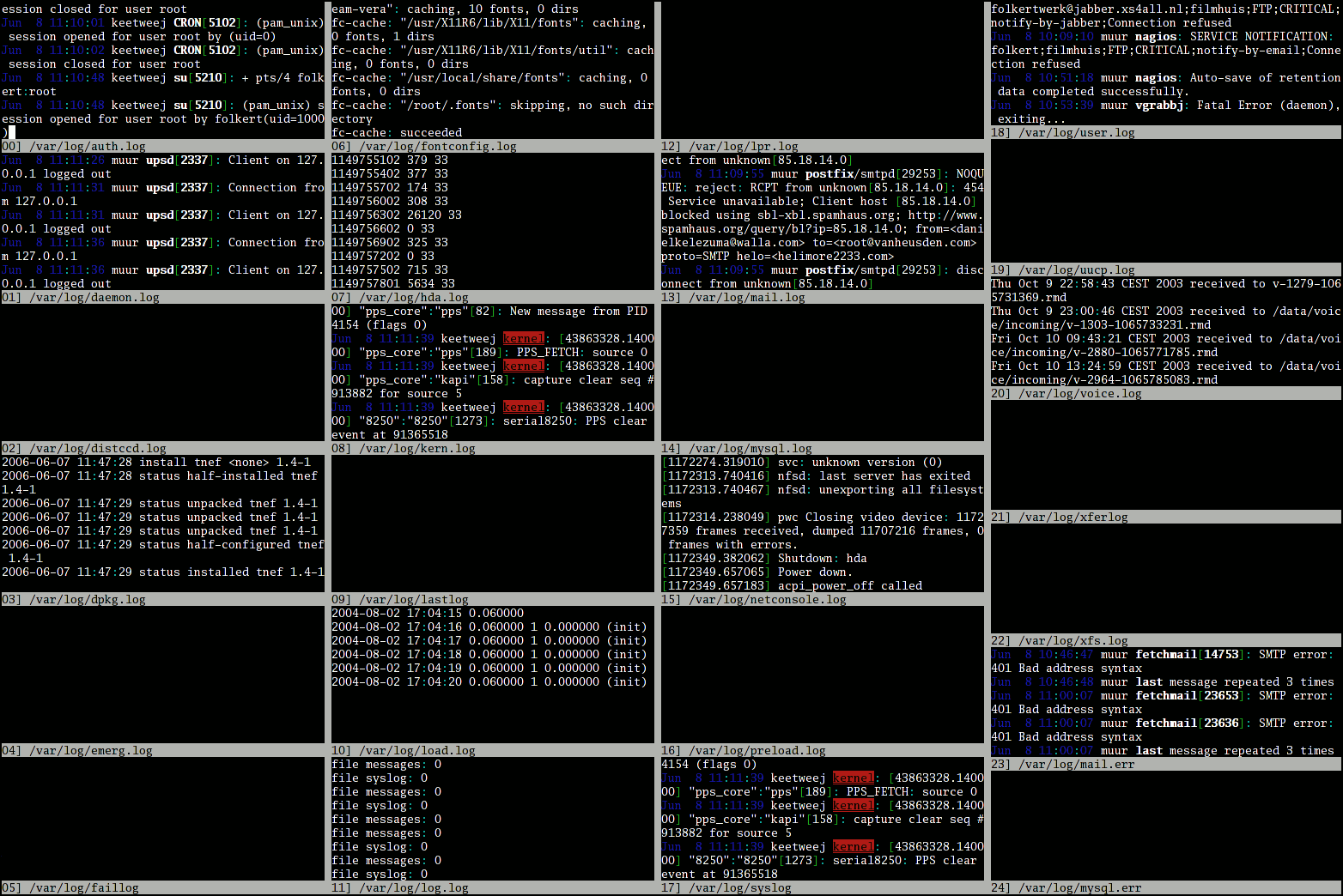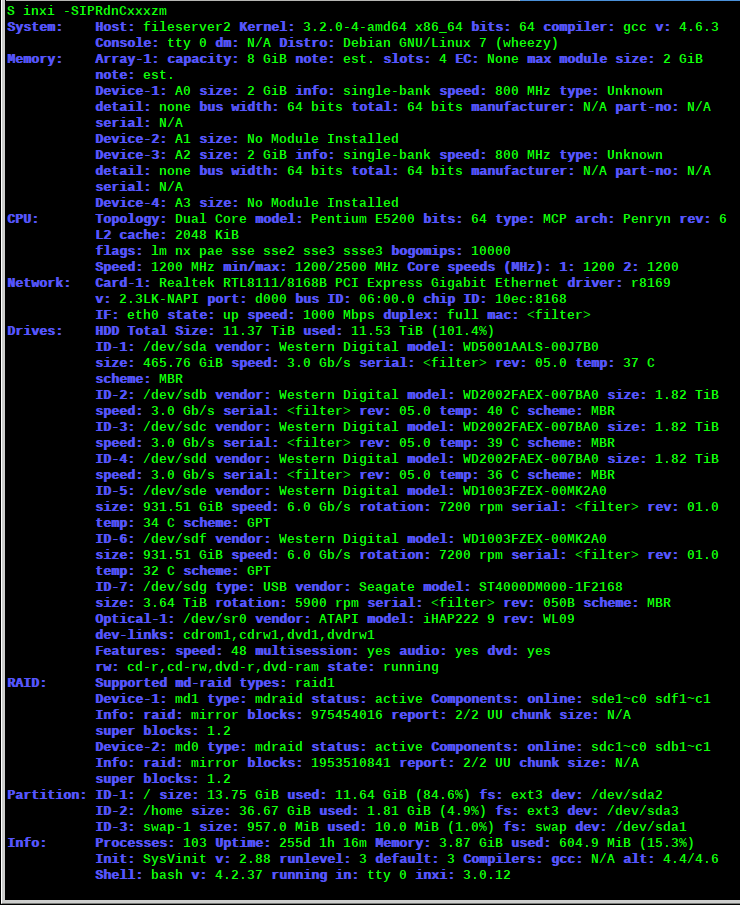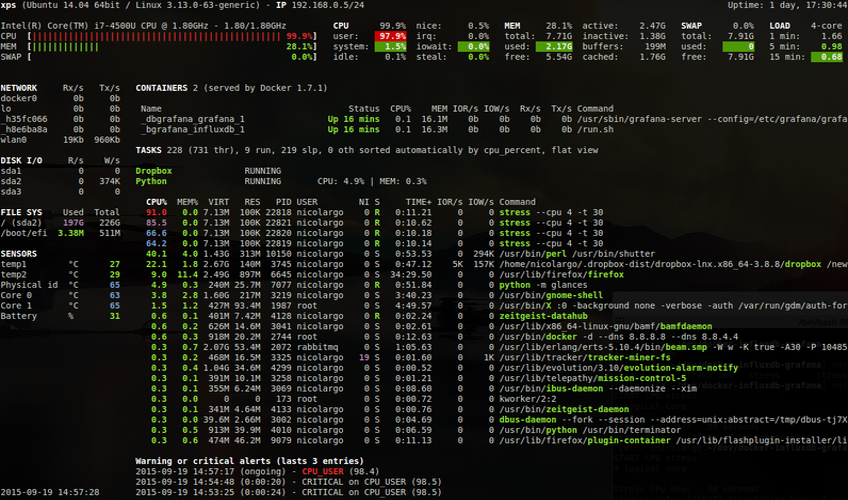131 private links
ngrep applies the grep logic to the network layer, allowing to match regular expressions against data payloads of packets; it recognizes IPv4/6, TCP, UDP, ICMPv4/6, IGMP and Raw across Ethernet, PPP, SLIP, FDDI, Token Ring and null interfaces.
A command to open multiple log files in a single terminal window and monitor them in real-time.

An interactive process viewer for Unix; improves the UI of top, by adding real-time meters and colors.
"A Python program with a top like UI used to show of behalf of which process is the I/O going on".

A comprehensive system information script; provides information about CPU, graphics, audio and network devices, drives and partitions, sensors; implemented as a Bash script.

A program to turn CLI tools into web applications; basically, it runs a command and starts a server so that the output can be displayed in a web page.
A comprehensive and detailed system monitoring tool; monitored parameters include: CPU, memory, load, process list, network interfaces, disk I/O, sensors, filesystems, docker, system info, uptime.

"looks for coreutils basic commands (cp, mv, dd, tar, gzip/gunzip, cat, etc.) currently running on your system and displays the percentage of copied data. It can also show estimated time and throughput".
Alternative shell designed for interactive use.
Focused on user-friendliness, with powerful autosuggestions, colors, "sane scripting" (w.r.t. to Bash).
The most widespread system shell to date.
A shell tool from GNU for executing jobs in parallel using one or more computers; it can split the input and pipe it into commands in parallel.
A tool for managing the history; powerful visual search and execution of previous commands; history editing capabilities.
ttyload is a lightweight utility which is intended to offer a color-coded graph of load averages over time on Linux and other Unix-like systems. It enables a graphical tracking of system load average in a terminal (“tty“).
As the name implies, Task spooler is a Unix batch system that can be used to add the Linux commands to the queue and execute them one after the other in numerical order (ascending order, to be precise). This can be very useful when you have to run a lots of commands, but you don't want to waste time waiting for one command to finish and run the next command. You can queue it all up and Task Spooler will execute them one by one. In the mean time, you can do other activities.
Ntfy is a simple yet serviceable cross-platform Python utility that enables you to automatically get desktop notifications on demand or when long running commands complete. It can as well send push notifications to your phone once a particular command completes.
A small tool to provide detailed information on the hardware configuration of the machine. It can report exact memory configuration, firmware version, mainboard configuration, CPU version and speed, cache configuration, bus speed, etc.
"Conspy allows a (possibly remote) user to see what is displayed on a Linux virtual console, and send keystrokes to it."
Password management belongs to the command line, deep into the Unix heartland, the shell. Titan is written in C and is available under the MIT license.
